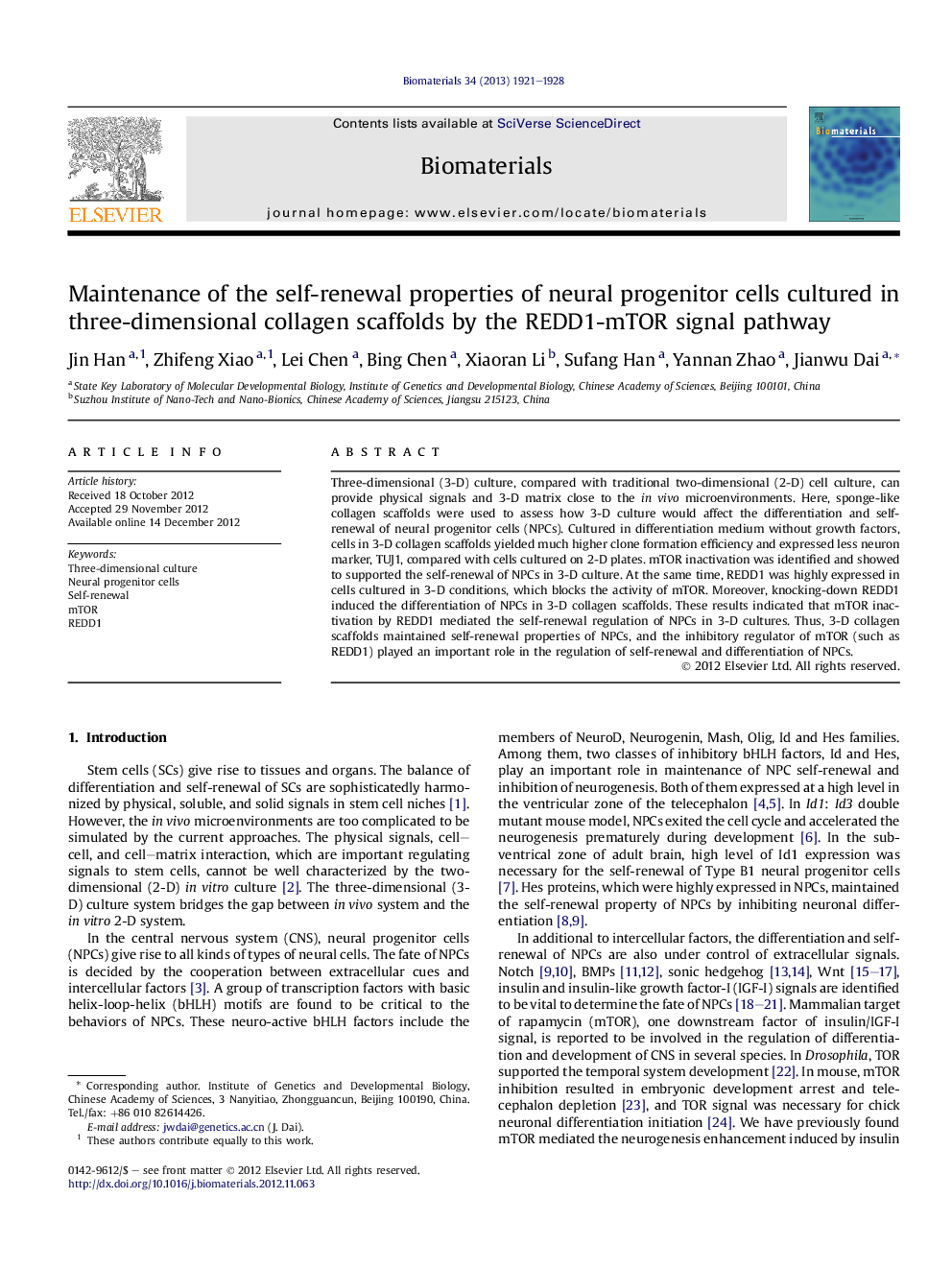| Article ID | Journal | Published Year | Pages | File Type |
|---|---|---|---|---|
| 10228620 | Biomaterials | 2013 | 8 Pages |
Abstract
Three-dimensional (3-D) culture, compared with traditional two-dimensional (2-D) cell culture, can provide physical signals and 3-D matrix close to the in vivo microenvironments. Here, sponge-like collagen scaffolds were used to assess how 3-D culture would affect the differentiation and self-renewal of neural progenitor cells (NPCs). Cultured in differentiation medium without growth factors, cells in 3-D collagen scaffolds yielded much higher clone formation efficiency and expressed less neuron marker, TUJ1, compared with cells cultured on 2-D plates. mTOR inactivation was identified and showed to supported the self-renewal of NPCs in 3-D culture. At the same time, REDD1 was highly expressed in cells cultured in 3-D conditions, which blocks the activity of mTOR. Moreover, knocking-down REDD1 induced the differentiation of NPCs in 3-D collagen scaffolds. These results indicated that mTOR inactivation by REDD1 mediated the self-renewal regulation of NPCs in 3-D cultures. Thus, 3-D collagen scaffolds maintained self-renewal properties of NPCs, and the inhibitory regulator of mTOR (such as REDD1) played an important role in the regulation of self-renewal and differentiation of NPCs.
Related Topics
Physical Sciences and Engineering
Chemical Engineering
Bioengineering
Authors
Jin Han, Zhifeng Xiao, Lei Chen, Bing Chen, Xiaoran Li, Sufang Han, Yannan Zhao, Jianwu Dai,
